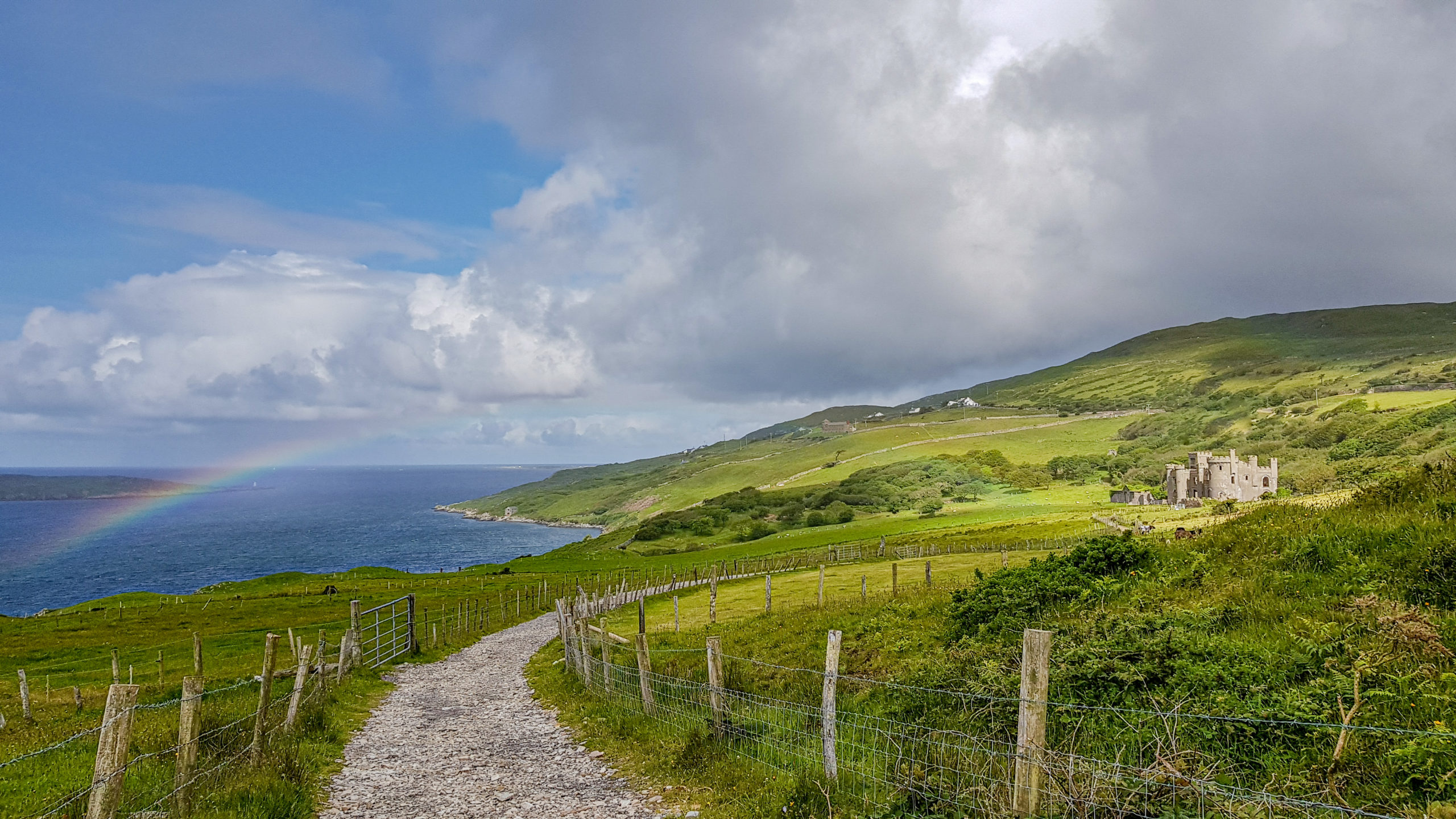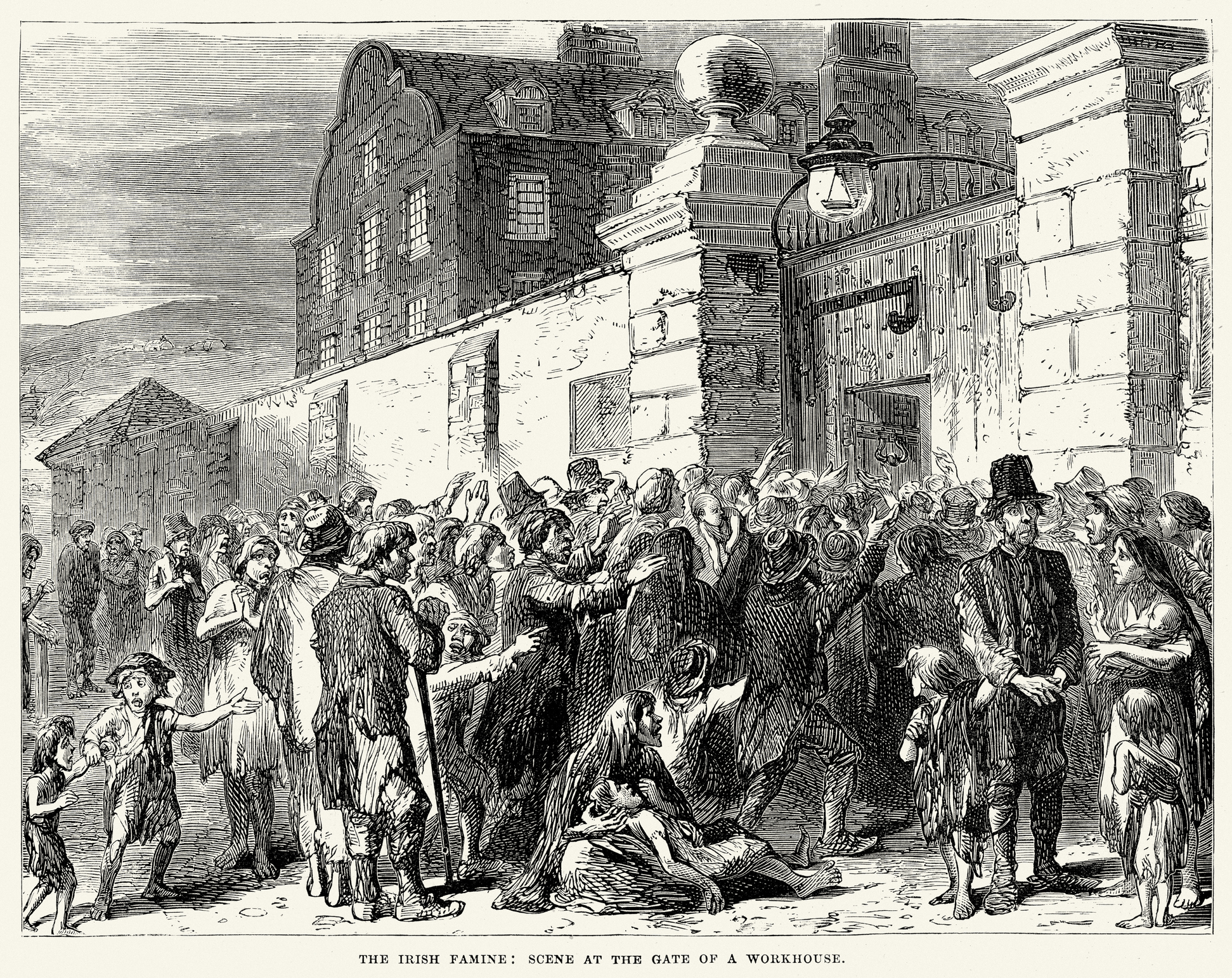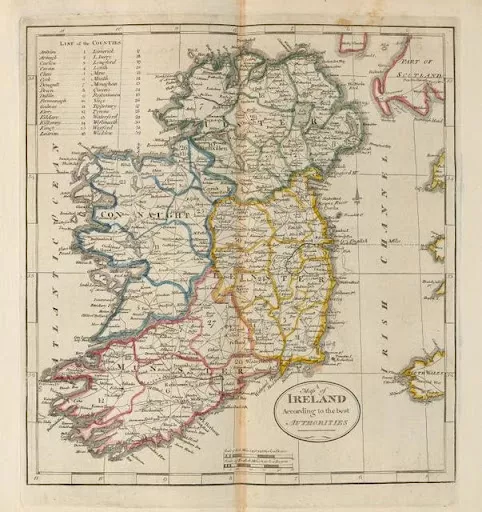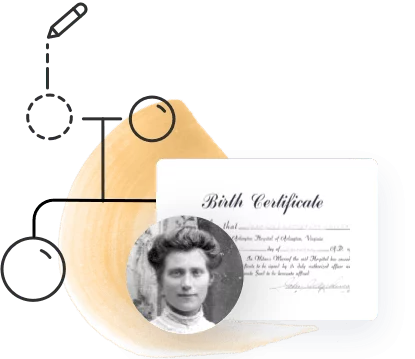
Around 70 million people all over the world claim roots in Ireland. If you’re one of them, and want to explore your Irish genealogy but don’t know where to start — we’ve got you covered. In this article we’ll tell you everything you need to know to begin your Irish genealogy journey, from the historical and geographic context to where you can find records of your ancestors in Ireland.
Understanding the historical context
Before you dig into your research, it’s a good idea to gain a basic grasp of Irish history. Knowing what was happening in Ireland during the time when your ancestors lived can help create some context, helping you better understand the movements and choices of your ancestors. It may also help you zero in on where you’re most likely to find records of them.
There are a number of historical events and phenomena that are particularly relevant to Irish genealogy research:
Plantations of Ireland/Plantations in Ulster (1500–1800)
Beginning in the 1540s, the English began colonizing Ireland. They established a “plantation system” that involved the confiscation of land in the northern region of Ireland (the province of Ulster) from the indigenous population, and expulsion of the former owners into other areas. The English then imported workers from other countries, primarily from Scotland and England, to live on and work the land as serfs. The plantations were managed by English rulers known as “undertakers.”
This phenomenon created a demographic division between southern and northern Ireland and laid the foundation of what became the geopolitical division between Northern Ireland — which is currently part of the United Kingdom — and independent Ireland.
If your ancestors lived in northern Ireland during this time period, it is likely that they were of English or Scottish origin rather than indigenous Irish descent.
Wars with England and famines
From the late 16th century onwards, there were frequent violent conflicts between the native Irish and the English colonizers. Public offices containing records were sometimes destroyed as a result of these conflicts, creating gaps that may present an obstacle to genealogists researching Irish ancestors.
English violence and policy also caused or exacerbated severe famines, which killed many Irish citizens and drove others to leave the country. The most infamous of these, known as the Great Famine or the Irish Potato Famine, took place between 1845–1849.

It is estimated that around a million people died and another million emigrated as a result of the Great Famine. These fatalities and emigrations caused a staggering drop of 20–25% in the population of Ireland and prompted a 100-year-long population decline. The majority of emigrants moved to the United States.
Irish immigration to America
Irish immigrants began immigrating to the US in about 1714. However, the vast majority of Irish immigrants — an estimated 4.5 million people — arrived in the Americas between 1820–1930. Most of them settled in the U.S., but some also moved to Canada as well as Central and South America. The Irish constituted the second-largest group of immigrants to the U.S., with the Germans being the largest group.
Irish independence
The Irish War of Independence took place between 1919–1921, and the southern portion of Ireland officially won its independence from the United Kingdom in 1922. However, it only became fully independent in 1937, and withdrew from the Commonwealth in 1949. Due to the fact that Irish and English systems were intertwined during this transition period, records of your Irish ancestors may be located in England as well as in Ireland.
Irish geography
Knowing the geography of Ireland is also essential, because knowing where your ancestors lived is key to finding records of them.
Historically, Ireland was divided into four provinces: Ulster, Munster, Leinster, and Connacht/Connaught.
These provinces are further broken up into counties, baronies, parishes, and townlands.

If you find a record that indicates a place name in Ireland but are unable to find it on the map, it’s likely that the name was misheard or misspelled by the clerk or enumerator who listed the information. Searching or browsing a placenames database may help you find the correct name, especially if you have partially correct information, such as the county or barony. The free website Logainm.ie provides detailed information on placenames in Ireland and may be helpful in locating the correct name of the town where your ancestors lived.
It’s important to search for information in the surrounding parishes as well as those of your ancestor’s hometown. You may find more information on that ancestor or on other family members living nearby.
Religion in Ireland
The history of tension between the native Irish and the English colonizers was religious as well as political in nature. The vast majority of Irish people were Catholic, while the Scottish were mostly Protestant or Presbyterian and the English generally belonged to the Church of England (referred to as Episcopalian in the U.S.). This is an important point to consider, because the religion of your Irish-born ancestor can tell you about their origins. In addition, the primary source of vital records in Ireland before the mid-19th century is the church, and you’ll need to know which church to look into when searching for those records.

The Irish language
While English is the primary language in Ireland today, the Irish language is still thriving and there are quite a few useful resources in Irish. You can certainly get by researching your Irish ancestors in English, but you may find it useful to learn a few key Irish terms.
Where to begin
A genealogy research project should always go backwards chronologically, starting with the most recent generations and working your way back a generation at a time. Along a similar vein, you should begin researching immigrant ancestors from the place of arrival, not departure. U.S. census records from 1850 onwards usually list a place of origin and where the parents were born, and this is often the way a genealogist will discover that their family came from Ireland. However, the specific town or county is usually not mentioned in those records. You may need to do further digging.
To find records of your Irish ancestors, you will need:
- Their full name
- The date of a significant event in their life that took place in Ireland (e.g. a birth, death, marriage, etc.)
- The place where the family lived in Ireland: county, parish, and town
- Their religion
When researching Irish ancestors who lived before 1864, church records will be your primary vital records. However, you may also find your ancestors in:
- Census fragments (where they exist — many were destroyed in wars)
- Civil registrations (for Protestant marriages in 1845–1863)
- Griffiths Valuation records (a real estate tax instituted from 1848–1864)
- Tithe records and other land and taxation records
- Cemeteries (though you should keep in mind that weather conditions in Ireland are harsh on headstones)
In the year 1864, civil registration was instituted uniformly, and from that point on, you can look for:
- Civil registration records
- Census records (many of these survived because they were copied to English records)
- Probate records
- Newspapers
- Cemetery records
So where do you find these records?
Many of them can be found online on websites such as MyHeritage. In some cases, though, you may have no choice but to travel to Ireland to acquire the records in person.
Irish Resources on MyHeritage
MyHeritage boasts more than 100 Irish collections with around 14 million records in all. The records go as far back as 1484 and include census records, vital records (birth, marriage, and death), immigration and travel records, newspapers, and much more.
Click here to search the Irish records on MyHeritage.
Additional resources
Additional records and useful information can be found in the following resources:
- Finding the Ireland Place of Origin • FamilySearch
- The National Archives of Ireland
- Irish Genealogy
- Catholic Parish Registers at the NLI
- General Register Office for Northern Ireland | nidirect
- Plantations In Ulster, 1600-41
- The Scots in Ulster: Scottish Landlords
- Public Record Office of Northern Ireland (PRONI) | nidirect
- Ulster Historical Foundation
You can also read more about researching your Irish surnames in this Knowledge Base article by Laura Colleran: Making the Most of Your Irish Surname





